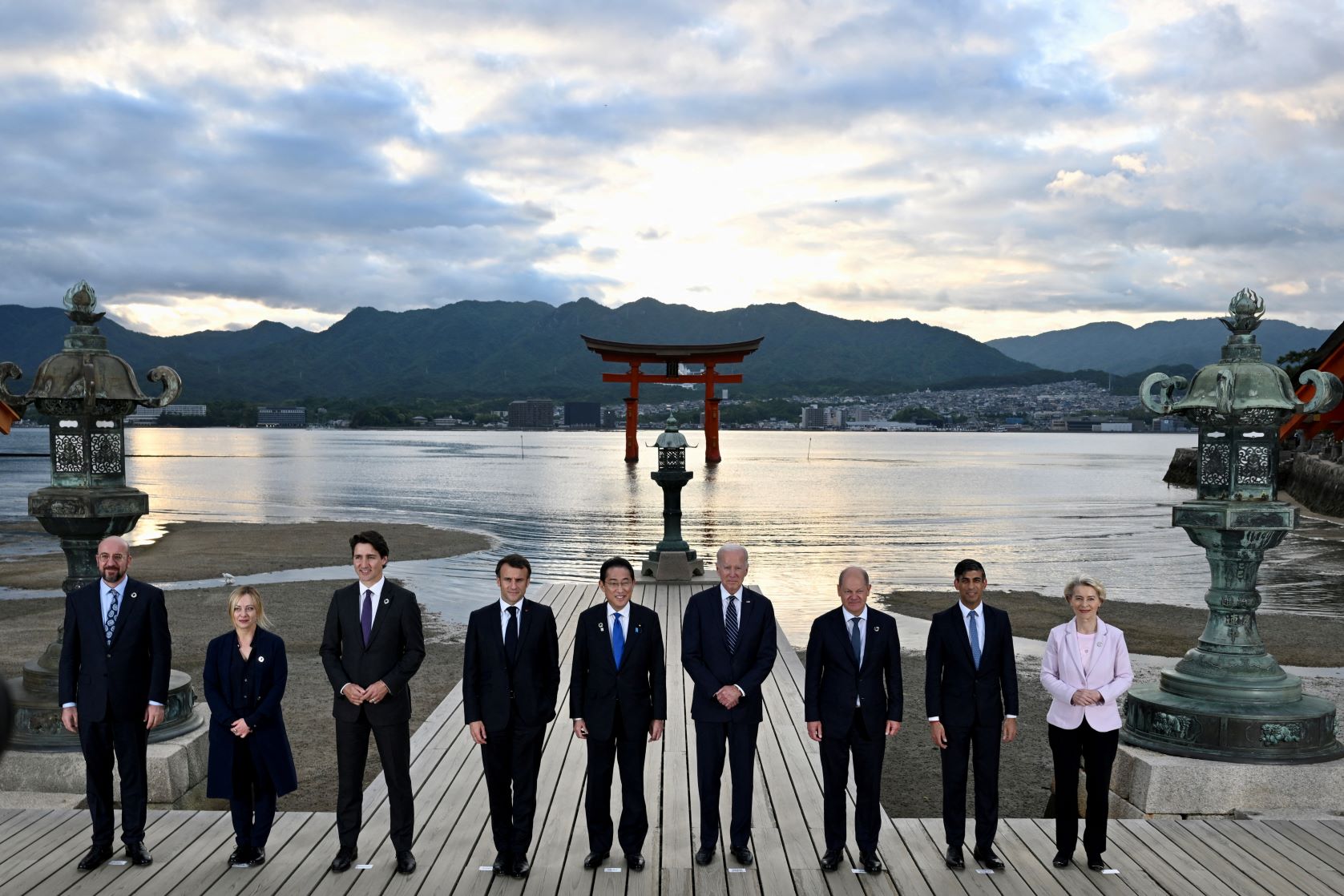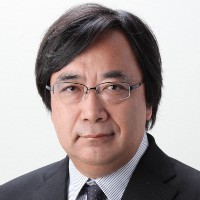Japan hosted the Group of Seven (G7) leaders summit in Hiroshima on May 19 through 21. Leaders discussed a wide range of issues, including Chinese economic coercion, Russia’s invasion of Ukraine, nuclear nonproliferation, AI governance, and sustainable development. The G7 stepped up its efforts to be more inclusive of the Global South’s diverse views—inviting leaders from Africa, Asia, Latin America, and the Pacific—but the five experts writing for this Council of Councils global perspective series diverge on how effective this approach will be.

G7 Countries Need to More Deeply Work With the Global South
As everyone talks about the Global South and its political importance, it remains to be seen whether the G7 did enough. Judging by the list of invitees to this summit, the Japanese presidency merits credit for being more inclusive. Leaders from India, Indonesia, Brazil, the Comoros, the Cook Islands, South Korea, and Vietnam took a seat at the table for several G7 “outreach sessions.” But to say their presence had much effect on G7 leaders’ priorities would be an overstatement. Judging by the two main outcomes of the summit—a pledge to continue military and economic support for Ukraine and a declaration to take a firm stand against China’s use of its economic power to bully smaller economies—the concerns of countries outside the G7 took a back seat.
To be sure, it is imperative that G7 countries remain committed to supporting Ukraine. Ensuring that Ukraine does not succumb to Russia’s aggression will require both continued military aid and an even more stringent sanctions regime.
It is also crucial for Western countries to coordinate their respective China policies and act to deter Beijing from taking ever more aggressive steps, particularly in regard to Taiwan. To this end, the G7 leaders’ commitment to jointly apply anti-coercion measures against China is both a necessary and a timely step. But both of the G7’s policy priorities risk failure unless at least some of the countries outside the G7 are willing to support Western action.
On Ukraine and China, however, the summit looked more like a traditional show of force by the United States and its allies than an attempt to build broader coalitions. Discussion focused far more on sticks such as military cooperation and the use of secondary sanctions against third countries that undermine Western sanctions than carrots that the G7 could offer to lure other countries away from Russia or China.
More effort will be needed to persuade the countries of the Global South, as diverse as the interests and needs of those countries may be, to cooperate. To achieve any consensus, Global South political priorities should be given more space. Perhaps a good start would be to discuss at least one non-G7 policy priority early on the first day of the next summit in Italy.
The Problem With Focusing on the Rise of China
Among the many themes covered at this G7 summit, the central shared concern was clearly the rise of China. The aim is to strengthen G7 members’ collective resilience and economic security in response to China’s potentially coercive use of its economic power. The ambition for united action rests on the summit’s launch of a G7 Coordination Platform on Economic Coercion.
This mechanism should enable G7 members to “protect global supply chains from illegitimate influence, espionage, illicit knowledge leakage, and sabotage in the digital sphere.” Members also committed “to coordinate on preventing the cutting-edge technologies we develop from being used to further military capabilities that threaten international peace and security.”
The G7, though, faces two problems. First, the unity of action it continues to display toward Russia since Russia’s full-scale invasion of Ukraine will not necessarily coalesce in regard to China. America’s European G7 allies cannot afford to take on China economically at the same time that they absorb the costs of their energy rupture with Russia. Also, for all their deep concerns about China’s military expansion, U.S. allies in the Pacific all depend heavily on access to the Chinese market.
As a result, the G7 conclusions on China include contradictory messages. G7 leaders say they want “to build constructive and stable relations” with China and to not “thwart China’s economic growth and development.” They will pursue de-risking rather than decoupling their economies, together developing alternatives to Chinese technologies and to critical mineral supply chains as well as pursuing their own Global Partnership on Infrastructure Investment.
But the subsequent list of areas of contention—China’s militarization of illegally occupied islands in the South China Sea; human and labor rights abuses in Tibet and Xinjiang; crushing the opposition in Hong Kong; and pressure on Taiwan—is a sharp reminder that the perceived threats from China are physical and human, not just about weaponizing G7 members’ economic and technological dependencies. As Alan Beattie wrote in the Financial Times ahead of the summit, “the U.S. wants a vigilante posse, not a victim support group.”
Second, even this more cautious approach to managing G7 strategic competition with China could alienate the other target community of the G7 summit, the big neutral economies represented there by India and Brazil that the G7 want to draw to their side.
In their separate statement on economic resilience and economic security, G7 members stated that they will stand together to “counter economic coercion.” But for Brazil, India, and others outside the G7’s magic circle, the G7’s liberal use of sanctions and weaponization of the U.S. dollar are reminders that a strong G7 also means a potential continuation of U.S. hegemony over their economic and foreign policies.
The Biden Doctrine in Action
It was not long ago that the G7 (then G8) was disregarded as an outdated forum whose capacity to provide global governance was diminishing by the day, a trend most eloquently attested to by the rise of the Group of Twenty as the principal international venue where responses to the great recession of 2008–09 were debated. Fourteen years later, the G7 has regained relevance.
The G7 communiqué largely reflects the Biden administration’s new vision of the U.S. role in the world, an emerging Biden doctrine, which was most notably laid out in a speech by National Security Advisor Jake Sullivan.
The United States is distancing itself from critical policy principles of the so-called Washington consensus that underpins globalization, such as deregulation, outsourcing, open trade, and direct investments, all in pursuit of efficiency-driven global supply chains. Instead, the United States is bent on reducing social, economic, and political vulnerabilities brought on by global interdependencies, such as Russia’s energy blackmail or China’s conditional market access. U.S. priorities now include restructuring supply chains closer to home (nearshoring) or to friendly countries (friendshoring), the investment in the semiconductor industry, severe restrictions to export high-tech chips to China, investment screening mechanisms, and other anti-coercion tools.
Biden has made clear he sees his agenda as compatible with—indeed, conditional on—the strengthening of U.S. partnerships. Partnerships are vital not just to the U.S. president’s strategic objectives—Europe’s security and stability in the Indo-Pacific—but also to expanding U.S. outreach to the Global South, especially on issues on which discursive convergences exist: the sacrality of territorial integrity, infrastructure development, health emergency responses, climate change, and nuclear nonproliferation. These issues, incidentally, are also those on which the United States seems willing to work with China in an attempt to defuse overheated tensions over Taiwan, which have created alarm in East Asia and beyond.
That U.S. G7 partners have largely embraced its objectives and discourse is an important achievement for the Biden administration. It was also significant that leaders from the Global South were directly exposed to Ukraine’s pleas through President Zelenskyy’s participation in the summit. The G7 may no longer be a global agenda setter. Yet, insofar as it generates consensus within the U.S.-led Western camp on the conditions for coordinating with geopolitical foes such as China and Russia and reaching out to the Global South, it will retain significant capacity to shape international relations.
Reviving Efforts for Peace and Nuclear Disarmament
This G7 summit was an historic occasion, taking place in one of only two cities to have experienced the devastation of nuclear weaponry.
As this year’s chair, Japanese Prime Minister Fumio Kishida wanted the summit to help reconfirm the unity among G7 nations and build momentum to bring the world together to end the war in Ukraine and work toward building a world free of nuclear weapons. On the final day of the summit, leaders from eight non-G7 emerging economies, including Brazil, India, and Indonesia, and Ukrainian President Volodymyr Zelenskyy, participated in two sessions: Ukraine and Toward a Peaceful, Stable and Prosperous World.
Before the summit, Prime Minister Kishida spoke about his hope that the world would not give up on achieving a nuclear free world. This culminated in the release of the Hiroshima Vision on Nuclear Disarmament.
Hiroshima was the ideal place for the world to think about peace and a world without nuclear weapons. During their visit, all leaders of the participating countries, including nuclear weapons states, laid flowers at the Cenotaph for Victims of the Atomic Bomb and visited the Hiroshima Peace Memorial Museum, the first time all G7 leaders visited the museum. President Zelenskyy has continued to reassert that “no one has the right to blackmail the world with a radioactive disaster.”
The G7 final communiqué called on the world to work together to address global challenges rather than exacerbate present divisions. It also included the concept of de-risking instead of decoupling, and its authors took great pains to avoid any expressions that could be deemed divisive.
In March, the discussion among ten CoC institutes at the Genron NPO’s annual Tokyo Conference culminated in a proposal to the G7 presented to Prime Minister Kishida. The proposal asserted that the world should cooperate and avoid any further division and that dialogue was urgently needed between all countries, including China, to end the war in Ukraine. The G7 communiqué also called on China to take greater responsibility and work with the rest of the world. China’s cooperation is essential to achieving world peace and resolving global challenges. The Kishida administration devoted considerable political resources to prepare for the G7 summit, including improving ties with South Korea and traveling to Ukraine to meet President Zelenskyy in March. This year’s G7 summit demonstrated that Japan is able to use its diplomatic capabilities in an era of division and confrontation.
European and Japanese Soft Power Signal Renewed Influence of G7
The G7 summit in Hiroshima showcased a new international order in the making: in a world where security is indivisible, the priority should be to uphold a collectively shaped rules-based order and find a modus vivendi with China. The G7 can work toward this by taking into account the diverse perspectives of industrialized countries and the Global South, which prioritizes multi-alignment and autonomy. Japan and Europe played a critical role in this process.
Japan’s diplomatic success was evident. Selecting Hiroshima as the venue for the summit was a powerful statement advocating for a world without nuclear weapons. It provided ample opportunities for symbolic gestures aimed at pressuring Russia and denouncing the use or potential use of nuclear weapons. Japan demonstrated its convening power by inviting influential leaders of the Global South, and representatives of regional organizations such as the Comorian President Azali Assoumani, current chair the African Union, and Cook Island Prime Minister Mark Brown, current chair of the Pacific Islands Summit. Japanese Prime Minister Fumio Kishida’s recent trips to Africa, India, and South Korea also reflect this inclusive approach. Simultaneously, as the sole G7 representative of Asia, Japan also managed to put China front and center in the discussions and in the final communiqué. Strong language emphasized Taiwan’s importance to international security and prosperity and urged China to refrain from “interference activities.” Despite the Japanese government’s preference for early event planning, they effectively handled the last-minute surprise visit by Ukrainian President Volodymyr Zelenskyy and successfully organized the Quad summit after President Biden’s travel plans changed. Finally, the security arrangements were robust, ensuring the safety of the attending leaders, especially noteworthy after the recent attacks on Japanese prime ministers.
Europeans contributed to shaping the international narrative on Ukraine. They facilitated contact between Zelenskyy—who traveled in a French government airplane—and Global South leaders still reluctant to condemn and sanction Russia. Europe’s balanced triptych approach to China, which acknowledges China as a partner, competitor, and systemic rival while advocating to de-risk rather than completely decouple, served as a guiding principle. Japan’s own three-pillar approach to China, encompassing conditional cooperation, counterweight, and deterrence, has many similarities with the European stance. Tokyo actively collaborated with European partners to influence Washington toward achieving convergence and adopting a less confrontational approach toward Beijing.
The inclusive nature of this G7 summit, its outreach to the Global South, and concerted efforts to address pressing global challenges highlighted the renewed significance and influence of this gathering.











